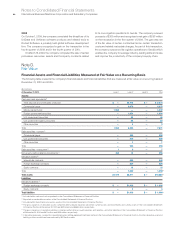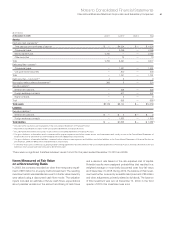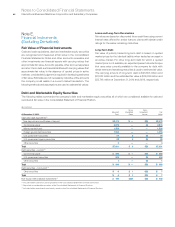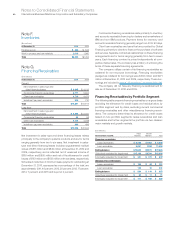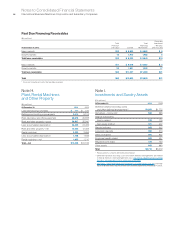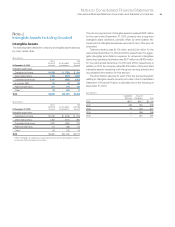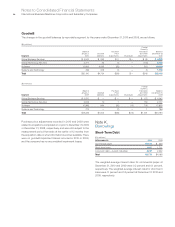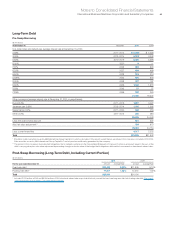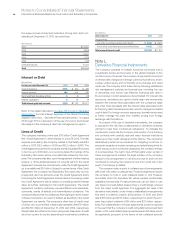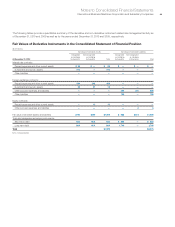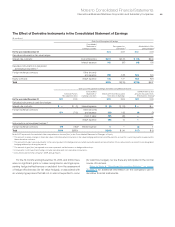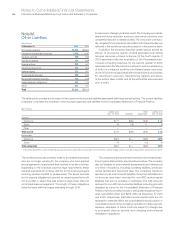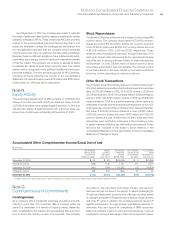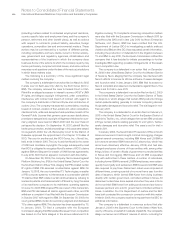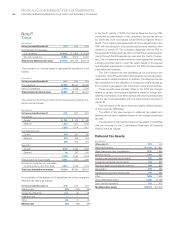IBM 2010 Annual Report Download - page 98
Download and view the complete annual report
Please find page 98 of the 2010 IBM annual report below. You can navigate through the pages in the report by either clicking on the pages listed below, or by using the keyword search tool below to find specific information within the annual report.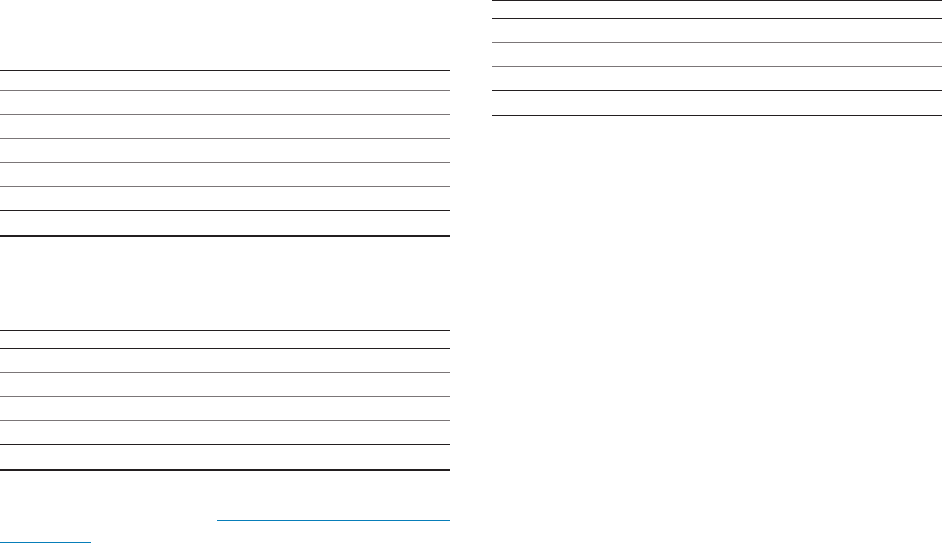
Notes to Consolidated Financial Statements
International Business Machines Corporation and Subsidiary Companies96
Pre-swap annual contractual maturities of long-term debt out-
standing at December 31, 2010, are as follows:
($ in millions)
2011 $ 4,021
2012 4,209
2013 5,451
2014 1,329
2015 168
2016 and beyond 10,427
To t a l $25,606
Interest on Debt
($ in millions)
For the year ended December 31: 2010 2009 2008
Cost of financing $555 $ 706 $ 788
Interest expense 365 404 687
Net investment derivative activity 3 (1) (13)
Interest capitalized 5 13 15
Total interest paid and accrued $928 $1,122 $1,477
Refer to the related discussion on page 128 in note V, “Seg ment
Infor mation,” for total interest expense of the Global Financing
segment. See note L, “Derivative Financial Instruments,” on pages
96 through 101 for a discussion of the use of currency and interest
rate swaps in the company’s debt risk management program.
Lines of Credit
The company maintains a five-year, $10 billion Credit Agreement
(the “Credit Agreement”), which expires on June 28, 2012. The total
expense recorded by the company related to this facility was $6.2
million in 2010, $6.3 million in 2009 and $6.2 million in 2008. The
Credit Agreement permits the company and its Subsidiary Borrowers
to borrow up to $10 billion on a revolving basis. Borrowings of the
Subsidiary Borrowers will be unconditionally backed by the com-
pany. The company may also, upon the agreement of either existing
lenders, or of the additional banks not currently party to the Credit
Agreement, increase the commitments under the Credit Agreement
up to an additional $2.0 billion. Subject to certain terms of the Credit
Agreement, the company and Subsidiary Borrowers may borrow,
prepay and reborrow amounts under the Credit Agreement at any
time during the Credit Agreement. Interest rates on borrowings under
the Credit Agreement will be based on prevailing market interest
rates, as further described in the Credit Agreement. The Credit
Agreement contains customary representations and warranties,
covenants, events of default, and indemnification provisions. The
company believes that circumstances that might give rise to breach
of these covenants or an event of default, as specified in the Credit
Agreement, are remote. The company’s other lines of credit, most
of which are uncommitted, totaled approximately $14,679 million
and $9,790 million at December 31, 2010 and 2009, respectively.
Interest rates and other terms of borrowing under these lines of credit
vary from country to country, depending on local market conditions.
($ in millions)
At December 31: 2010 2009
Unused lines:
From the committed global credit facility $ 9,926 $ 9,910
From other committed and uncommitted lines 11,462 7,405
Total unused lines of credit $21,388 $17,314
Note L.
Derivative Financial Instruments
The company operates in multiple functional currencies and is
a significant lender and borrower in the global markets. In the
normal course of business, the company is exposed to the impact
of interest rate changes and foreign currency fluctuations, and to
a lesser extent equity and commodity price changes and client
credit risk. The company limits these risks by following established
risk management policies and procedures, including the use
of derivatives, and, where cost effective, financing with debt in
the currencies in which assets are denominated. For interest rate
exposures, derivatives are used to better align rate movements
between the interest rates associated with the company’s lease
and other financial assets and the interest rates associated with
its financing debt. Derivatives are also used to manage the related
cost of debt. For foreign currency exposures, derivatives are used
to better manage the cash flow volatility arising from foreign
exchange rate fluctuations.
As a result of the use of derivative instruments, the company
is exposed to the risk that counterparties to derivative contracts
will fail to meet their contractual obligations. To mitigate the
counterparty credit risk, the company has a policy of only entering
into contracts with carefully selected major financial institutions
based upon their credit ratings and other factors. The company’s
established policies and procedures for mitigating credit risk on
principal transactions include reviewing and establishing limits for
credit exposure and continually assessing the creditworthiness
of counterparties. The right of set-off that exists under certain of
these arrangements enables the legal entities of the company
subject to the arrangement to net amounts due to and from the
counterparty reducing the maximum loss from credit risk in the
event of counterparty default.
The company is also a party to collateral security arrangements
with most of its major counterparties. These arrangements require
the company to hold or post collateral (cash or U.S. Treasury
securities) when the derivative fair values exceed contractually
established thresholds. Posting thresholds can be fixed or can
vary based on credit default swap pricing or credit ratings received
from the major credit agencies. The aggregate fair value of all
derivative instruments under these collateralized arrangements
that were in a liability position at December 31, 2010 and 2009
was $363 million and $779 million, respectively, for which the com-
pany has posted collateral of $9 million and $37 million, respec-
tively. Full collateralization of these agreements would be required
in the event that the company’s credit rating falls below investment
grade or if its credit default swap spread exceeds 250 basis points,
as applicable, pursuant to the terms of the collateral security


